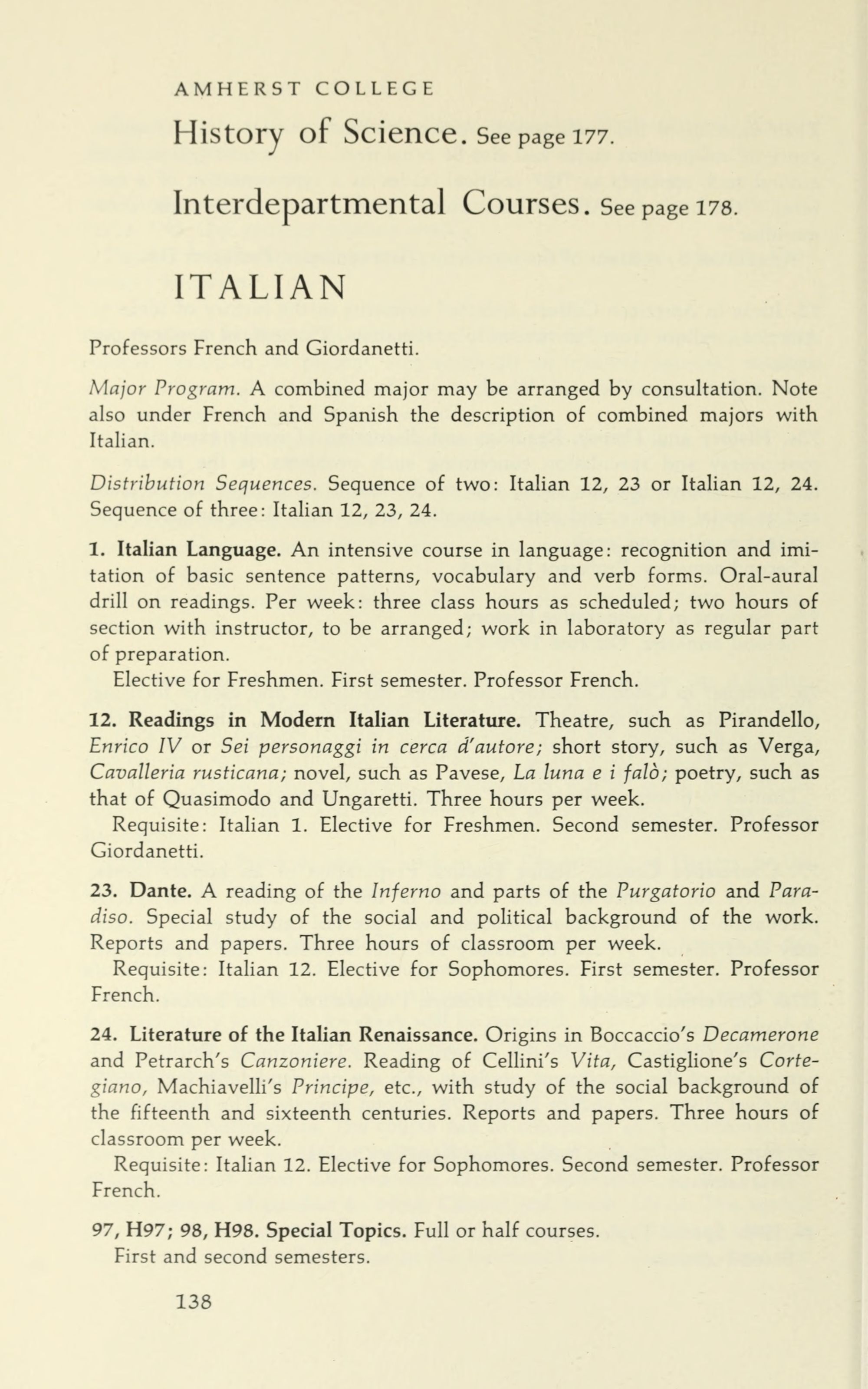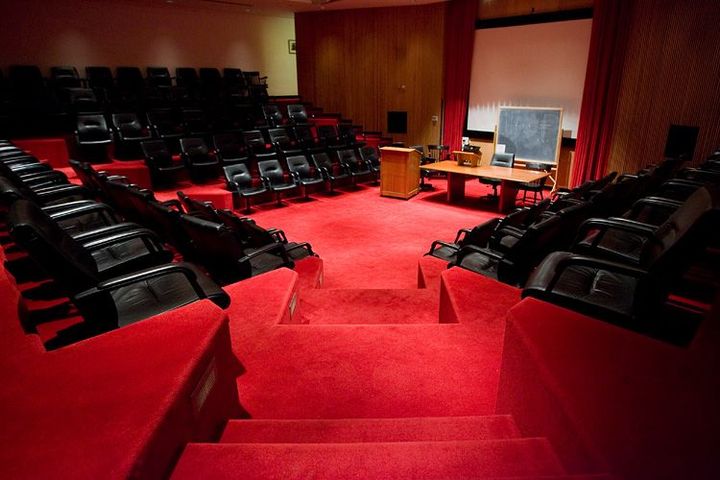Ciao! Ciao? The History of Italian at Amherst
Amherst offers courses in seven foreign languages, but it has been 50 years since an Italian course was last offered here. The Student explores the history of the now defunct Italian language program.

Rarely does an Amherst student spend their nights poring over an Italian workbook. Rarer still is a group studying the language’s verb conjugations or varied pronouns together. Yet, for a majority of Amherst’s history, this would have been a standard sight.
2022 marks 50 years since Amherst last taught an Italian language course, and although the college offers seven other foreign languages, it discontinued its Italian program in 1972, over a century after its conception.
The absence of an Italian program sets Amherst apart from many of its peers: In the Five College Consortium, Amherst and Hampshire College are the only institutions without Italian, and of the 11 members of the New England Small College Athletic Conference (NESCAC), Amherst is one of just two schools that doesn’t offer Italian (the other is Bates College). So, what happened to Italian?
According to the course catalogs maintained by the Archives & Special Collections, the college taught its first Italian class in 1851. All students were required to take Latin and Greek throughout their college career, but they could take modern languages as electives. Students were only able to take Italian during their last term at Amherst, whereas they could take other languages, such as French and German, for multiple terms.
Eventually, the course offerings expanded. By the turn of the century, students could take two terms of Italian, as well as Italian literature courses, usually about Dante’s “The Divine Comedy.” The concentration grew in popularity and peaked in the 1960s, when there was enough interest to warrant a formal distribution. Students could major in Italian, but only jointly with French or Spanish within the Department of Romance Languages. The college offered language and special topics courses alongside cultural classes such as “Literature of the Italian Renaissance.” Then, suddenly, the Italian program disappeared.
The cause is surprisingly simple: Someone retired. Professor Emeritus of Romance Languages Reginald French joined the college in 1937. He taught a multitude of courses, and in 1970-71, he taught every single Italian class at Amherst, except for “Readings in Modern Italian Literature.” During the 1971-72 academic year, French went on leave, and the only classes offered were the first two courses in the language sequence taught by Visiting Professor of Romance Languages Kenneth Wayne Miller. By 1972-73, Miller had left, and French had retired. There was not enough interest to warrant new hires, so no Italian language or culture course remained at Amherst.
Though beginning and advanced Italian ceased to be taught, cultural studies classes didn’t stay away for long. Classes about the Renaissance have been common at Amherst since the 1970s, and next semester, three different courses on the topic will be offered: “Renaissance Italy,” taught by Visiting Professor of History Jutta Sperling, as well as “Italian Renaissance” and “Renaissance to Revolution,” both taught by William McCall Vickery 1957 Professor of the History of Art Nicola Courtright.
Courtright speaks Italian and has extensively studied the Renaissance period. She noted that her students, as far as she is aware, don’t take her classes because they’re interested in Italian culture. “They think of [Renaissance art] more in terms of the famous art and culture than that they belong to than Italian culture, per se,” she said.
Many art history majors do study in Italy because of its vital place in the Renaissance and European art sphere. Of the students who don’t study Italian beforehand, Courtright said, “They lament a little bit not learning Italian better, for good reason.”

Yet, some Amherst students still learn the language, either at an intensive summer language program, such as at the Middlebury Language Schools, or by taking classes within the Five College Consortium.
Amherst students can study Italian at UMass, Mount Holyoke, or Smith College. Nick Edwards-Levin ’25 is a German and music major currently studying Italian to improve his operatic skills. He can already analyze librettos (the text of operas) in German, and noted that “being able to do that in Italian would be really awesome.”
Edwards-Levin takes the bus thrice weekly to Smith, and while he praised the quality of the coursem — saying that he “couldn’t imagine that there’d be any difference between taking the class at Smith versus at Amherst” — he noted his frustrations about the commute. “It’s a solid 30 minutes out, 30 minutes back, so that’s about three hours a week … which definitely adds up,” he said.
Edwards-Levin added that having the class offered at Amherst would also come with the benefit of cultural activities held by the department, which help create a community while practicing speaking skills or gaining cultural knowledge. “It would be nice to have that proximity [to Amherst] not just for class, but also for Italian table and knowing that there are other students on campus who want to [learn] Italian,” he said. “In the German department, we have Kaffeeklatsch every Monday night and [a] German lunch table.”
In fact, every language offered at Amherst has a language table, where students can practice their conversational skills over lunch, and many also hold informal gatherings throughout the week, such as the Spanish department’s Tertulias.
Unfortunately, it seems that Italian won’t be returning to Amherst’s course catalog anytime soon. According to Courtright, expanding classes is “a lot more necessary in STEM at this moment, let’s say, than Italian,” due to the sheer demand for such courses.
However, interested students could still organize those cultural events that Edwards-Levin mentioned, for example, by setting up film screenings of classic Italian cinema or conversation sessions, potentially through a new student organization. Amherst’s Italian department may be defunct, but students interested could still engage with others learning the language or planning a study abroad trip, even if it takes a bit of coordination.





Comments ()